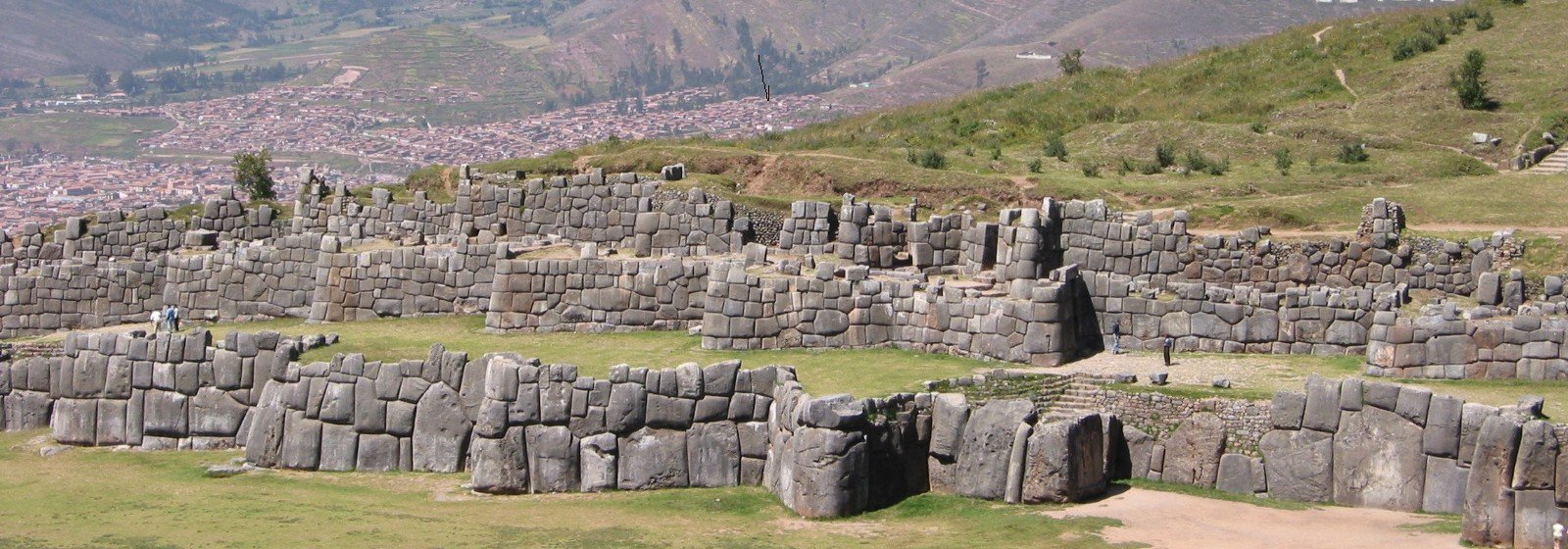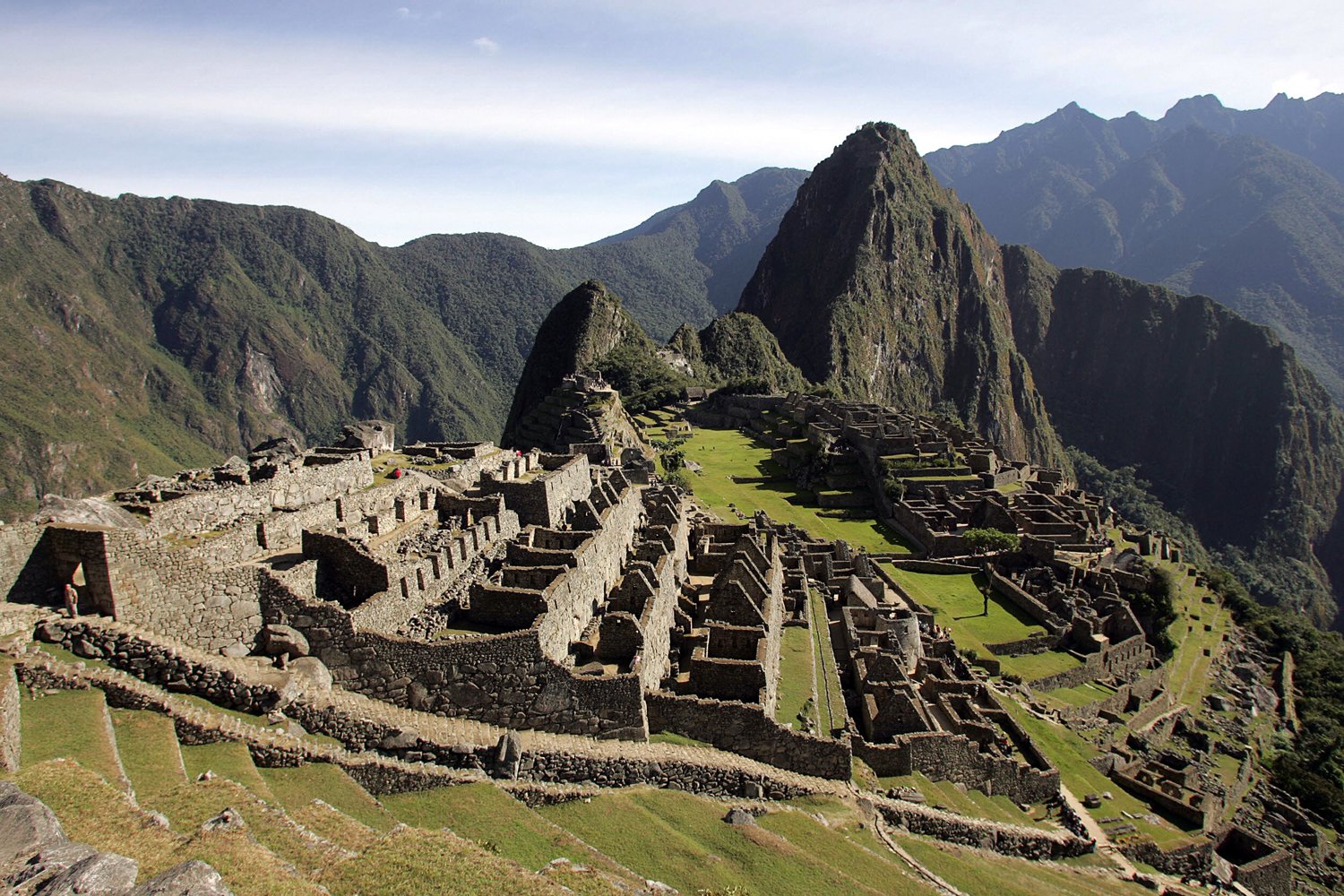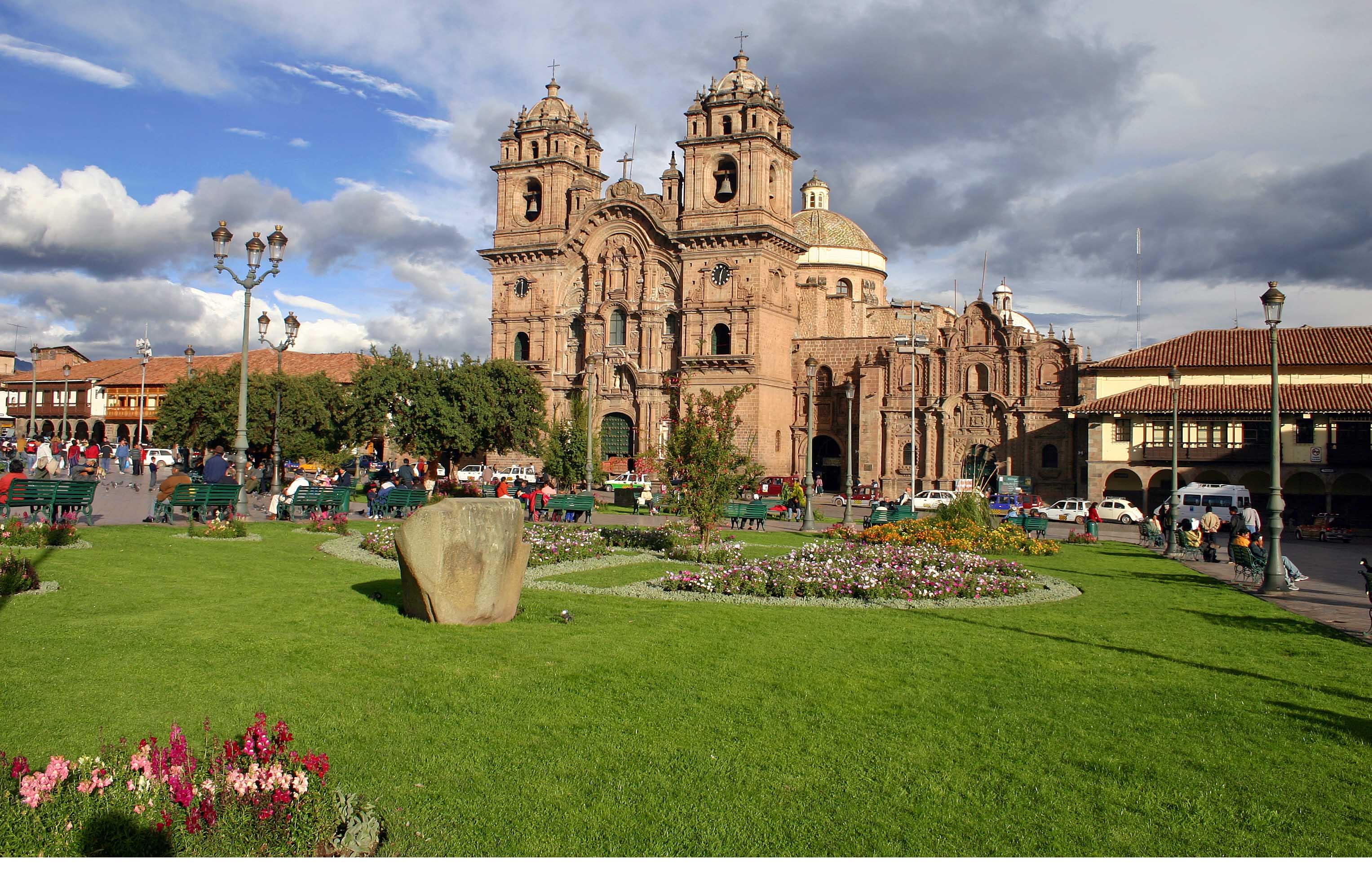The Inca road system was the most extensive and advanced transportation system in pre-Columbian South America. The network was based on two north-south roads with numerous branches. The best known portion of the road system is the Inca Trail to Machu Picchu. Part of the road network was built by cultures that precede the Inca Empire notably the Wari culture.
Main routes of the Inca Trail
The eastern route ran high in the puna grasslands and mountain valleys from Quito, Ecuador to Mendoza, Argentina. The western route followed the coastal plain except in coastal deserts where it hugged the foothills. More than twenty routes ran over the western mountains, while others traversed the eastern cordillera in the mountains and lowlands. Some of these roads reach heights of over 5,000 metres (16,000 ft) above sea level. The trails connected the regions of the Inca empire from the northern provincial capital in Quito, Ecuador past the modern city of Santiago, Chile in the south. The Inca road system linked together about 40,000 kilometres (25,000 mi) of roadway and provided access to over 3,000,000 square kilometres (1,200,000 sq mi) of territory.
The Inca Trail along this area is situated between 500 to 800 metres (1,600 to 2,600 ft) above sea level, this monumental road, which could reach 20 metres (66 ft) in width, connected populated areas, administrative centres, agricultural and mining zones as well as ceremonial centres and sacred spaces.
These roads provided easy, reliable and quick routes for the Empire’s civilian and military communications, personnel movement, and logistical support. The prime users were imperial soldiers, porters and llama caravans, along with the nobility and individuals on official duty. Permission was required before others could walk along the roads of the Inca Trail, and tolls were charged at some bridges. Although the Inca roads varied greatly in scale, construction, and appearance, for the most part they varied between about 1 to 4 metres (3.3 to 13 ft) in width.
Much of the system was the result of the Incas claiming exclusive right over numerous traditional routes, some of which had been built centuries earlier mostly by the Wari Empire. Many new sections were built or upgraded substantially: through Chile’s Atacama desert, and along the western margin of Lake Titicaca, serve as two examples. The Incas developed techniques to overcome the difficult territory of the Andes . On steep slopes they built stone steps resembling giant flights of stairs. In desert areas near the coast they built low walls to keep the sand from drifting over the road.
The Qhapaq Ñan (English: Great Inca Road, or Main Andean Road, and meaning “the beautiful road”) constituted the principal north-south highway of the Inca Empire traveling 6,000 kilometres (3,700 mi) along the spine of the Andes.
The Qhapaq Ñan unified this immense and heterogeneous empire through a well-organized political system of power. It allowed the Inca to control his Empire and to send troops as needed from the capital, Cusco.
The most important Inca road was the Camino Real, as it is known in Spanish, with a length of 5,200 kilometres (3,200 mi). It began in Quito, Ecuador, passed through Cusco, and ended in what is now Tucumán, Argentina. The Camino Real traversed the mountain ranges of the Andes, with peak altitudes of more than 5,000 m (16,000 ft). El Camino de la Costa, the coastal trail, with a length of 4,000 kilometres (2,500 mi), ran parallel to the sea and was linked with the Camino Real by many smaller routes.
Bridges along the Inca Trail – Inca Road System
Various means were used to bridge water courses. Rafts were used to cross wide meandering rivers. Bridges built of stone or floating reeds were used in marshy highlands. Inca rope bridges provided access across narrow valleys. A bridge across the Apurímac River, west of Cuzco, spanned a distance of 45 metres. Ravines were sometimes crossed by hanging baskets, or oroya, which could span distances of over 50 metres. Bridges were sometimes built in pairs.
Inca Trail Road System to Machu Picchu
Main Article: Inca Trail to Machu Picchu. Machu Picchu itself was far off the beaten path, and served as a royal estate populated by the ruling Inca and several hundred servants. It required regular infusions of goods and services from Cuzco and other parts of the empire. This is evidenced by the fact that there are no large government storage facilities at the site. A 1997 study concluded that the site’s agricultural potential would not have been sufficient to support residents, even on a seasonal basis.
Schematic overview of the altitude changes along the Inca Trail to Machu Picchu
The trail starts around Km 82 along the Urubamba River in a zone that the Peruvians call “Quechua”: This zone is between 2300-3500m (7,539-11,473 ft) and has temperate, dry weather with average temperatures that range from 0 to 21C (32 to 70F). The rainy season is from December to March. The rest of the year is dry or even parched from May through September. This region is extensively cultivated and essentially, there is no natural vegetation left.
Effect of the conquest of the Inca Empire
The true extent of the road network (Inca Trail) is not completely known, since the Spaniards, post conquest, either dug up the road completely in some areas, or allowed it to deteriorate and fall into ruin under iron-clad horses’ hooves, or the metal wheels of ox-carts.
Today, only 25 percent of this route (Inca Trail to Machu Picchu) is still visible, the rest having been destroyed by the construction of modern infrastructure. Different organizations such as UNESCO and IUCN have been working to protect this route, in collaboration with the governments and communities of the 6 countries through which the Great Inca Road passes.
Original Article: Wikipedia








